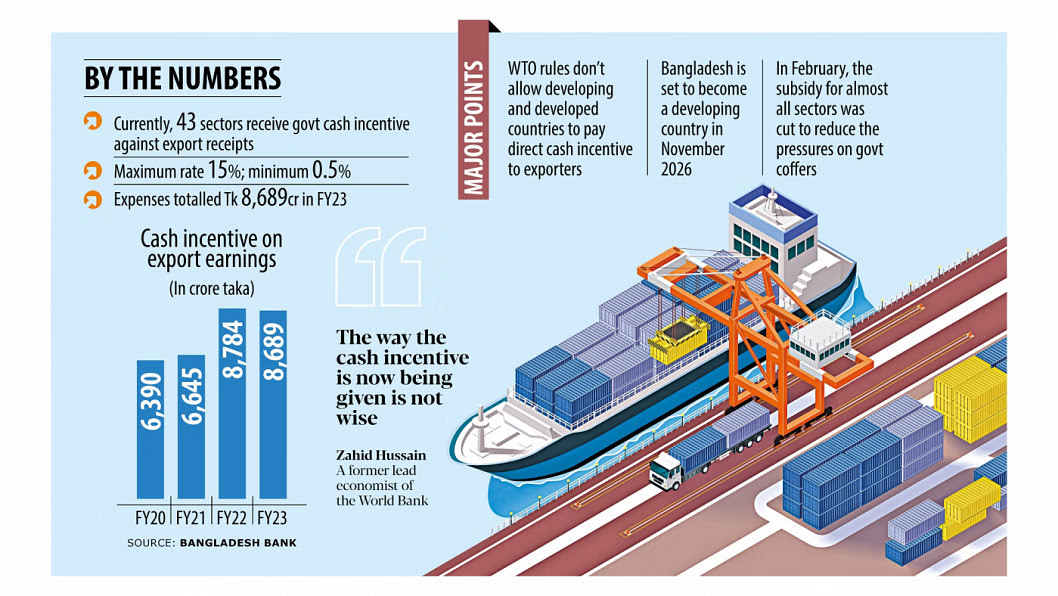Bangladesh needs to scale up production of garment items from man-made fibre to increase exports as the consumption of apparels made from the artificial textile raw material is rising globally, exporters, manufacturers and buyers said yesterday. The export of apparel items produced from man-made fibre (MMF) from Bangladesh has remained stuck at 20 percent for many years although the production of such garment items has crossed 40 percent worldwide, according to a study of the Bangladesh Garment Manufacturers and Exporters Association (BGMEA). In Bangladesh, the use of cotton-based yarn and the garment products produced from it is rising. But exporters are receiving lower prices from the sales of cotton fibre-made garment items. Of the total garment items exported from Bangladesh last fiscal year, 74.14 percent was made from cotton fibre, up from 68.67 percent from that in 2008-09, the study showed. Rubana Huq, president of the BGMEA, said the sector needs foreign direct investment and government assistance to divert to MMF-based garment production. The government should also ease the rules to attract FDI to MMF textile production as the country has very low capacity in this segment, she said. Ziaur Rahman, head of H&M for Bangladesh, Pakistan and Ethiopia, said the trend of garments shipped from Bangladesh shows higher concentration of cotton-made apparel items, whereas the global consumption is diverting to MMF. “We are way behind in product development,” he said, while speaking on the findings of the study at the BGMEA office in Dhaka. He said H&M pays 75 cents more to Chinese suppliers compared to Bangladeshi exporters for the same products, as China has the capacity to produce diversified items. Bangladesh’s export is over-concentrated in five garment items – t-shirt, trouser, jacket, sweater, and formal shirt – and they together accounted for 73 percent of garment exports last fiscal year. The country shipped t-shirts worth $7.01 billion, trousers $6.93 billion, jackets $4.38 billion, sweaters $4.25 billion, and formal shirts worth $2.32 billion in the year, according to the study. Moreover, Bangladesh is too much reliant on only three markets, namely the European Union, the US and Canada and market diversification is taking place very slowly. Last fiscal year, 83 percent of Bangladesh’s garment exports went to the three markets. Khondaker Golam Moazzem, research director of the Centre for Policy Dialogue, said the industry has probably lost its appetite to compete. But the garment industry grew up to the current stage amid strong competition in the 1980s and 1990s, he said. “The sector needs FDI,” he said, adding that factories have opportunities to improve capacity and develop products and markets. Ahsan H Mansur, executive director of the Policy Research Institute of Bangladesh, said the government needs to make at least two or three special economic zones fully functional, rather than developing 100 such zones at one go. Md Mahbub-ur Rahman, deputy CEO of HSBC Bangladesh, suggested garment exporters explore the potential to develop a separate special economic zone of Bangladesh in Vietnam to grab a bigger share of the global apparel market.
RMG BANGLADESH NEWS
A Knowledge-based Initiative of Best Sourcing
Ready Made Garments sector is the key source of foreign currency and GDP for Bangladesh. Approximately 4.2 million people are dependent on the RMG sector for their bread and butter.
Ready Made Garments sector is the key source of foreign currency and GDP for Bangladesh. Approximately 4.2 million people are dependent on the RMG sector for their bread and butter.
Contact us: info@rmgcentre.com
© Copyright 2019 - RMG Bangladesh















